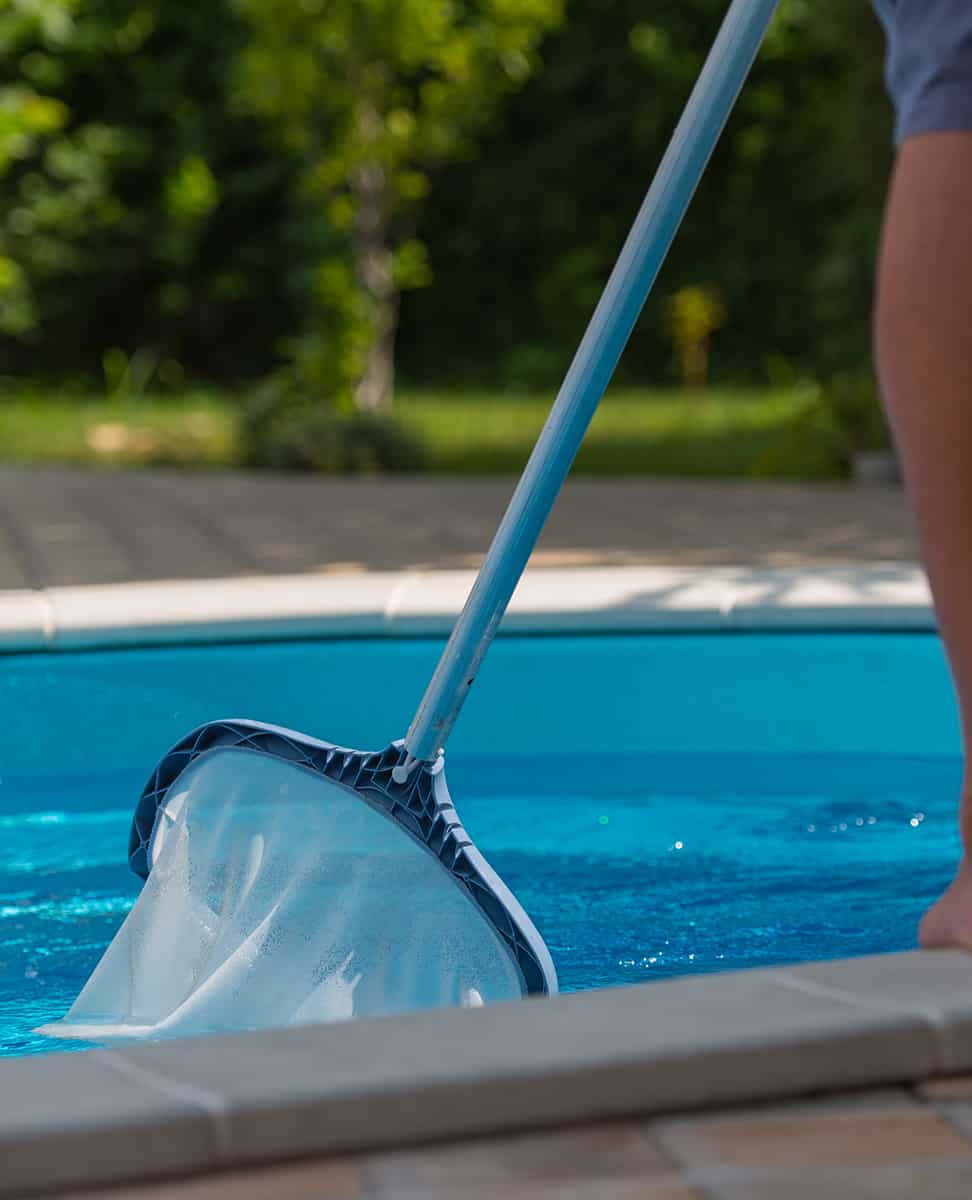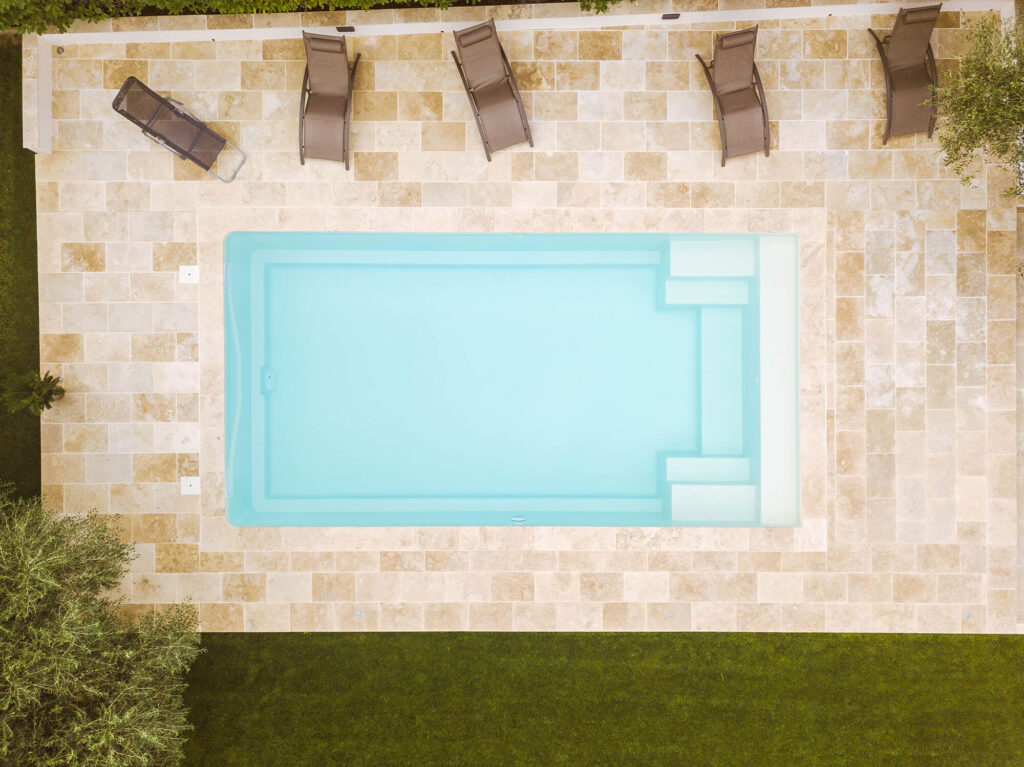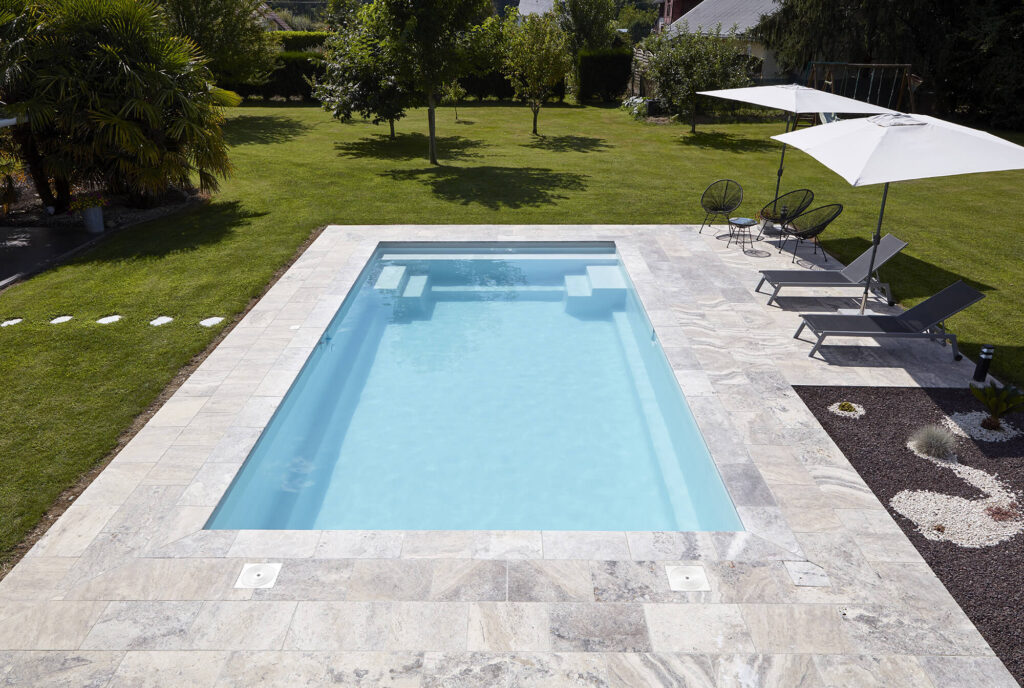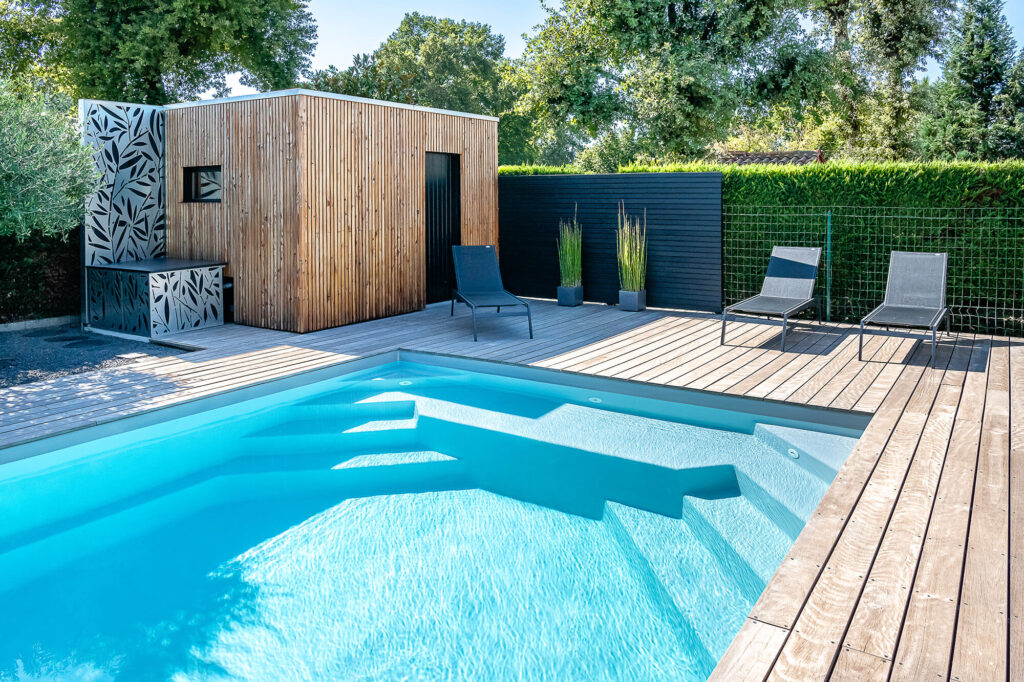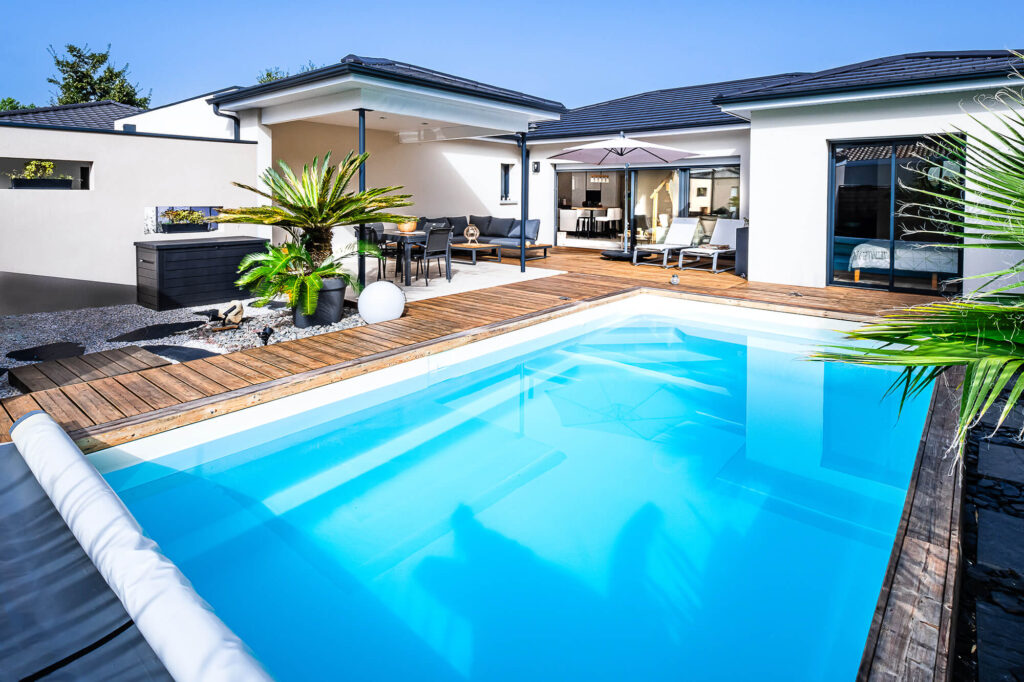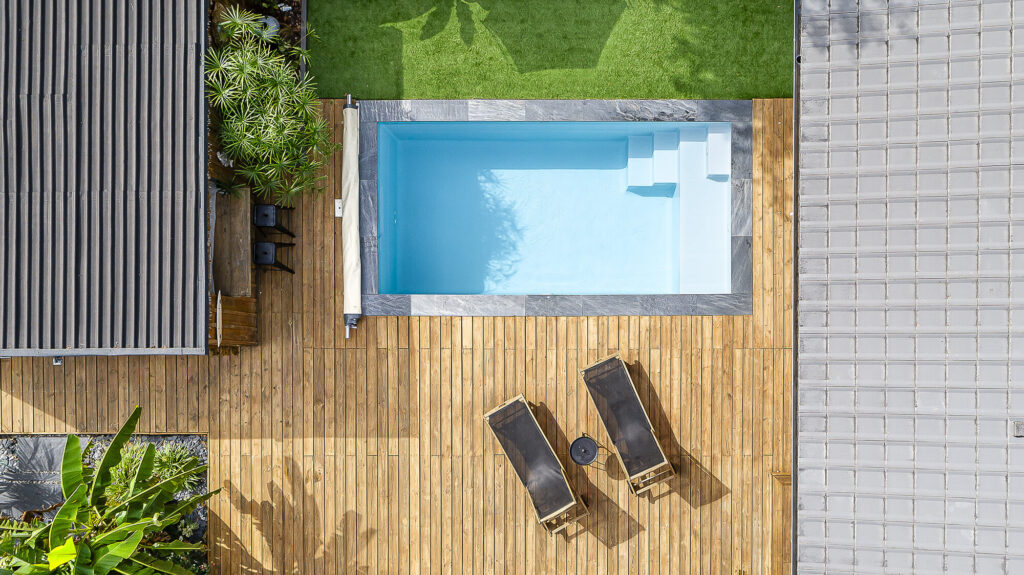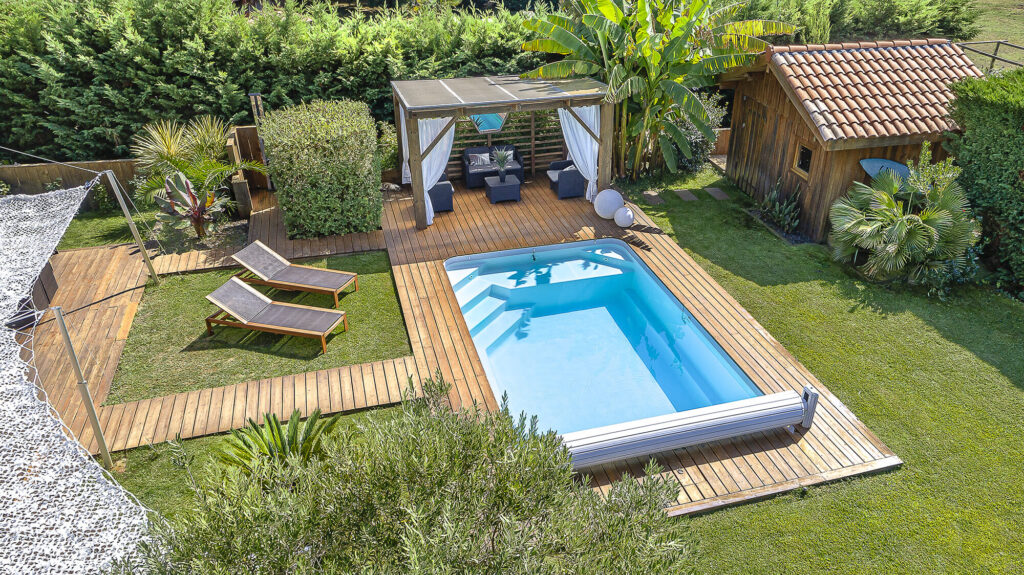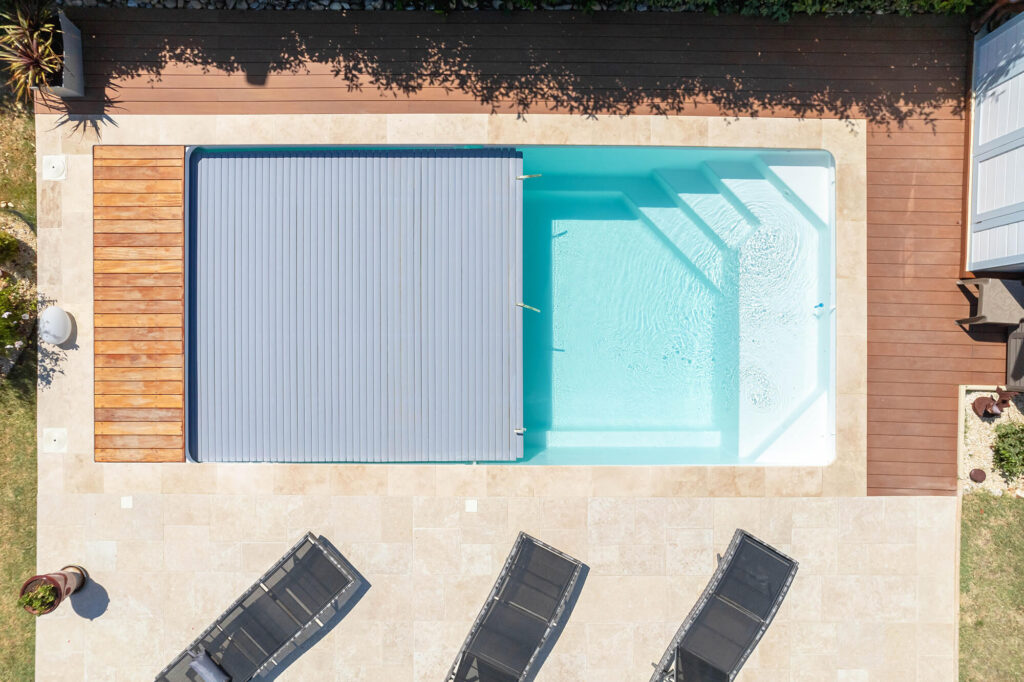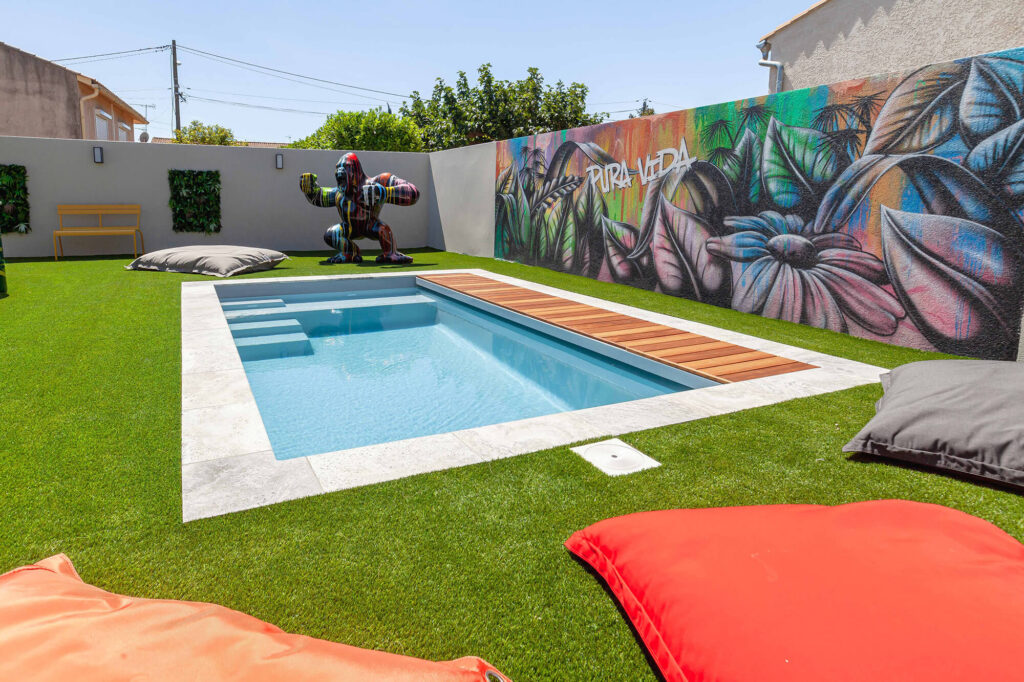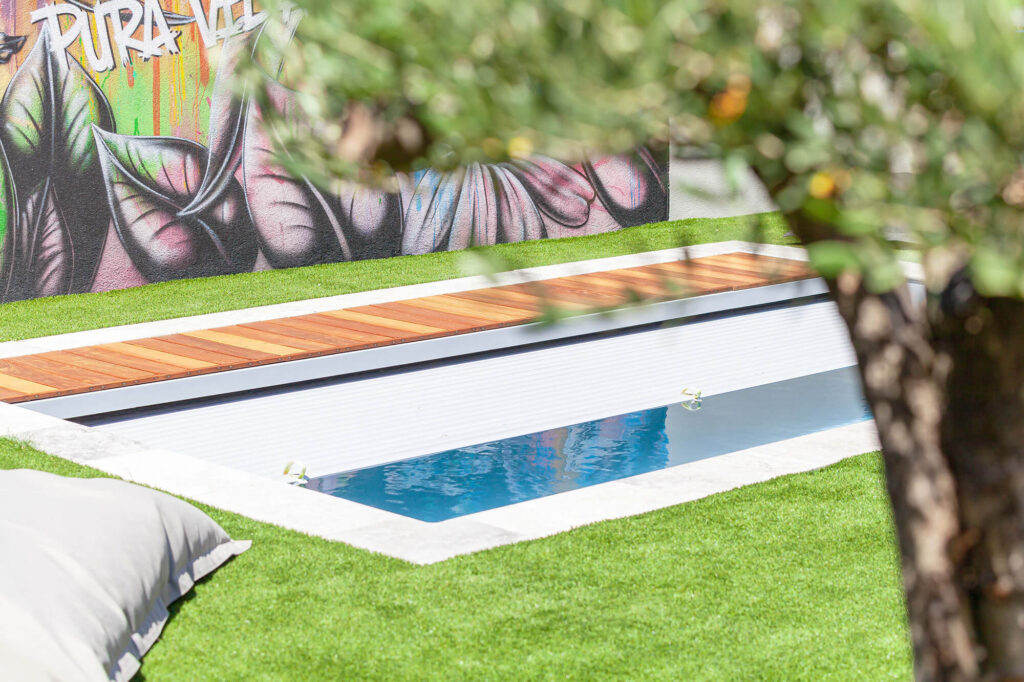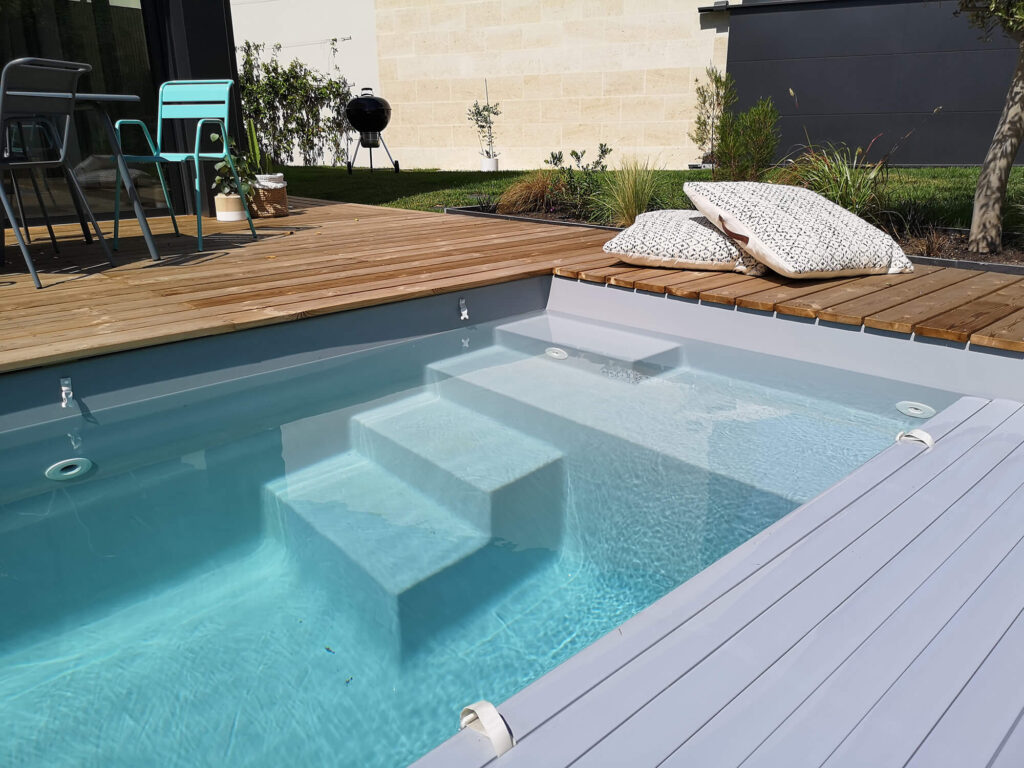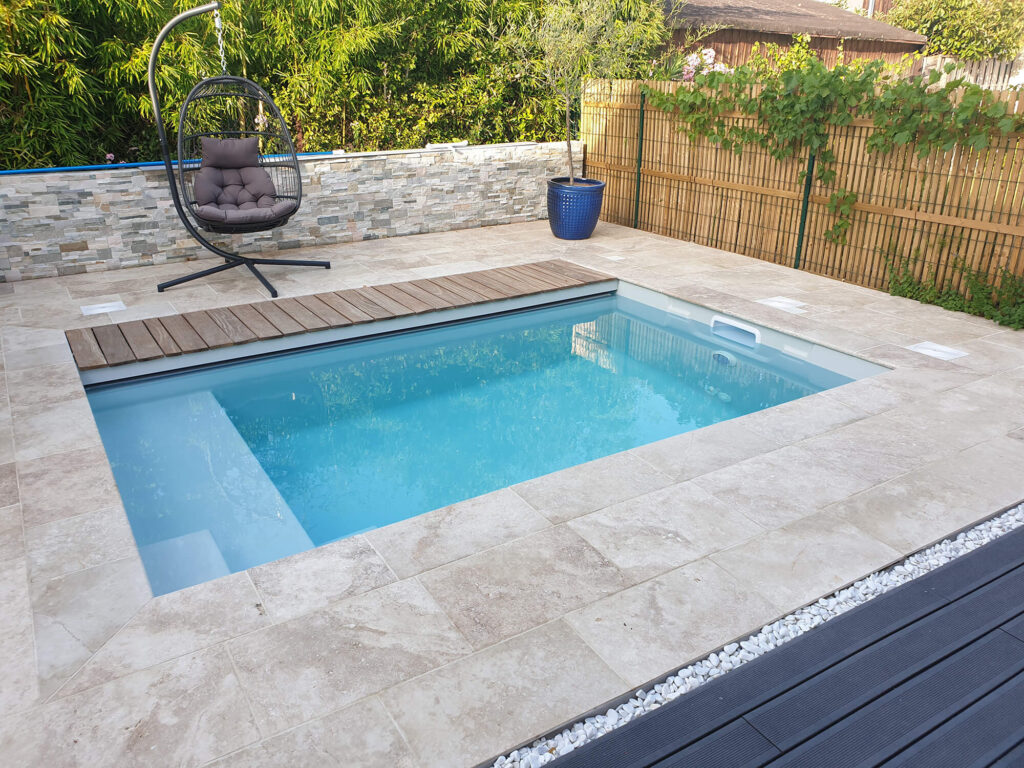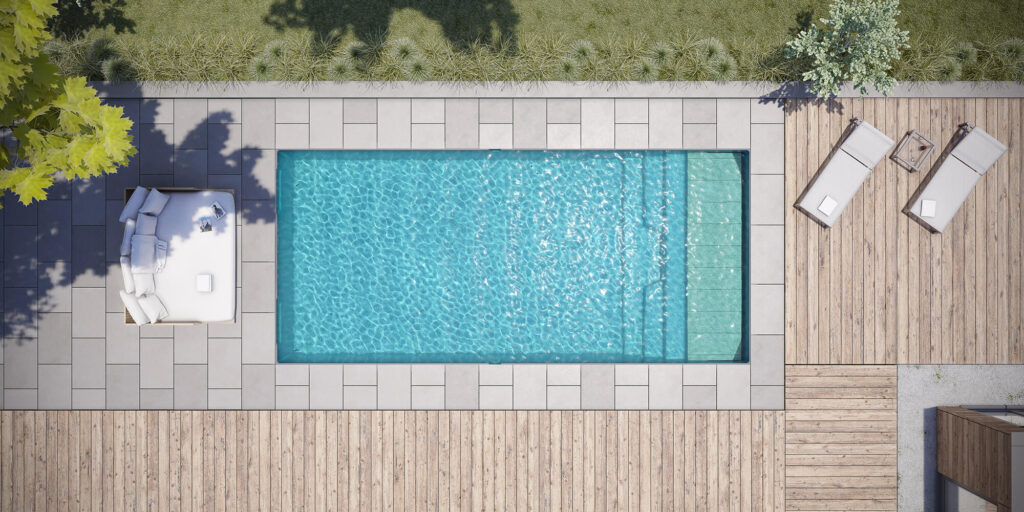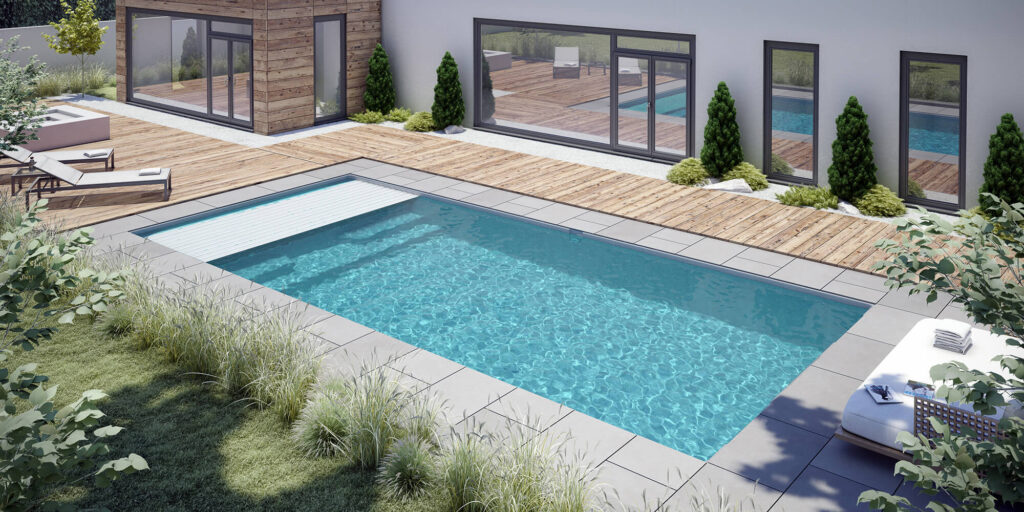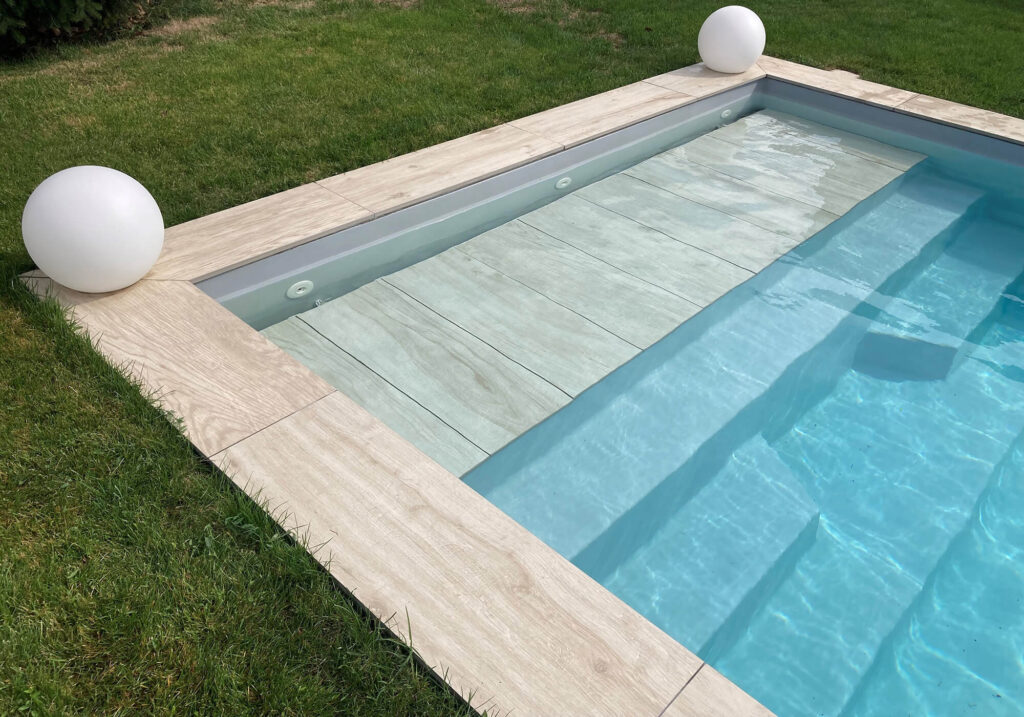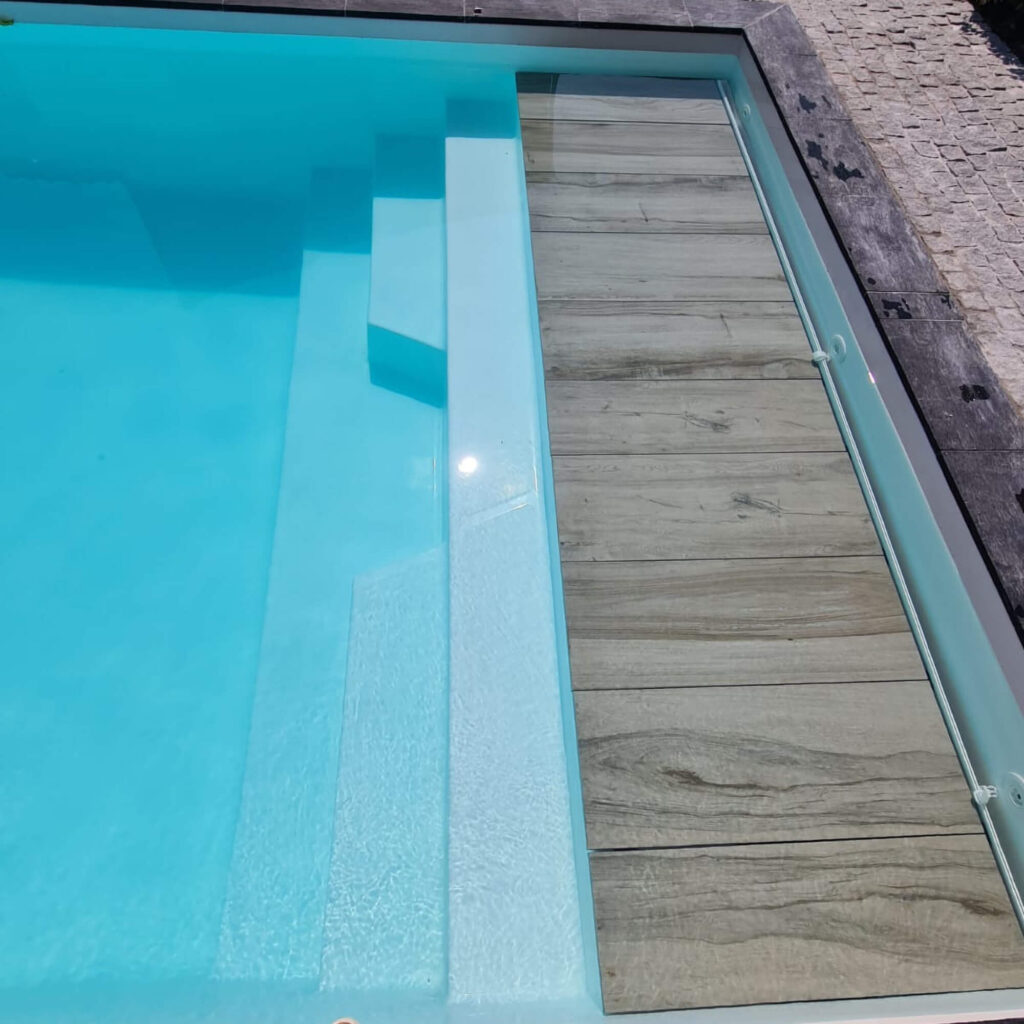When algae appears in your pool , the first question that comes to mind is: how to get rid of it? And for good reason, whether it is green algae or black algae , this phenomenon is a common problem in swimming pools.
To answer this question, it is important to first understand the underlying causes. An unbalanced pH , inadequate water circulation, or weather conditions that favor algae growth are usually responsible.
In the following lines, we will explain the reasons for the formation of algae and guide you through the steps to follow to clean your pool and prevent its return.
Why do I have algae in my pool?
The presence of algae in a swimming pool is a common concern, especially green algae, which are the most widespread. Their proliferation generally results from several factors, both environmental and technical. For example, after a period of rain, the imbalance of the water , particularly in terms of pH, can promote the appearance of algae .
The temperature of the pool water is also a determining factor. In hot weather, warm water and direct exposure to the sun provide ideal conditions for the rapid multiplication of algae . In addition, insufficient water circulation, due to inadequate filtration or a lack of maintenance of the bottom and walls, facilitates the establishment of algae on the walls of the pool. If your water is subjected to these factors, it is likely that algae will develop.
To eliminate and get rid of algae , it is essential to properly identify the cause(s) of their appearance, in order to apply the appropriate treatments when maintaining your pool.
Steps to Remove Algae from Your Pool
To eradicate algae from your pool , you will need to carry out a complete cleaning and rigorous disinfection of the pool. Here are the steps to follow to eliminate algae and prevent its return:
- Brush and clean the pool: Start by carefully scrubbing the walls, bottom of the pool, waterline and corners. Focus on areas where algae has accumulated. Use special brushes to reach hard-to-reach areas. Also remember to empty and clean the skimmer basket , where debris can accumulate.
- Clean and disinfect the filter: The filter is essential to maintain quality water. Clean it thoroughly with a disinfectant to remove algae and other impurities. Then, let the filtration run continuously until the water becomes clear again.
- Adjust the pH of the water: An unbalanced pH promotes algae growth . Check the pH of your water and adjust it between 7.0 and 7.4 for chlorine treatment, or between 7.4 and 7.6 for bromine treatment. A balanced pH will make your treatments more effective.
- Perform a shock treatment: A shock treatment is essential to destroy impurities and microorganisms present in the water. Choose a product compatible with your treatment method (chlorine, bromine, active oxygen). Be careful not to use the pool if the chlorine levels are too high , and rebalance them if necessary.
- Add an algaecide: To prevent algae from reappearing, use an algaecide product . These products are used to prevent algae growth .
- Use a flocculant: To improve water clarity, place a flocculant cartridge in the skimmer basket every 7 to 15 days. The flocculant helps to group fine particles together, making them easier to remove through the filter.
- Filter continuously: After treatment, let the filtration run 24 hours a day until the water is crystal clear again. Once the water is purified, resume your usual treatment and filtration program. If necessary, replace the filter material to ensure optimal efficiency.
How to prevent the appearance of algae?
Have you managed to remove the algae present inside your pool? To prevent them from returning and thus extend the life of a polyester shell pool , a few simple but effective practices should be adopted throughout the year.
- Maintain proper chemical balance : Water chemical balance is the first line of defense against algae. Use test strips or a test kit regularly to monitor pH, alkalinity, and hardness levels in your water.
- Monitor and adjust chlorine levels : Chlorine is a key element in disinfecting pool water and algae . A chlorine residual between 1 and 3 ppm (parts per million) is ideal for preventing algae growth . Remember to test the water regularly, at least once a week, to ensure that chlorine levels remain within this range. If levels are too low, add stabilized chlorine to restore the proper concentration. During periods of high heat or heavy pool use, more frequent adjustments may be necessary to prevent algae from growing.
- Ensure daily filtration : Properly filtered water limits the build-up of organic debris and particles, which reduces the nutrients algae need to grow. Remember to clean and maintain the filtration system regularly, removing debris and checking that it is working optimally, to ensure efficient circulation.
- Use a preventative algaecide : In addition to chlorine, a preventative algaecide is an additional measure to prevent algae from settling. Weekly application of this specific treatment is particularly recommended during periods of high heat or rain, when algae are more likely to proliferate. There are different types of algaecides suitable for each treatment method (chlorine, bromine, active oxygen), and it is important to choose a product that is compatible with your disinfection system. Active oxygen can also be effective in combating and preventing the appearance of algae .
By combining these preventive measures, you can not only prevent the appearance of algae, but also ensure healthy and pleasant water for swimming throughout the season. Regular maintenance will allow you to fully enjoy your shell pool without the inconveniences associated with algae!
Configure your pool online Back to all news